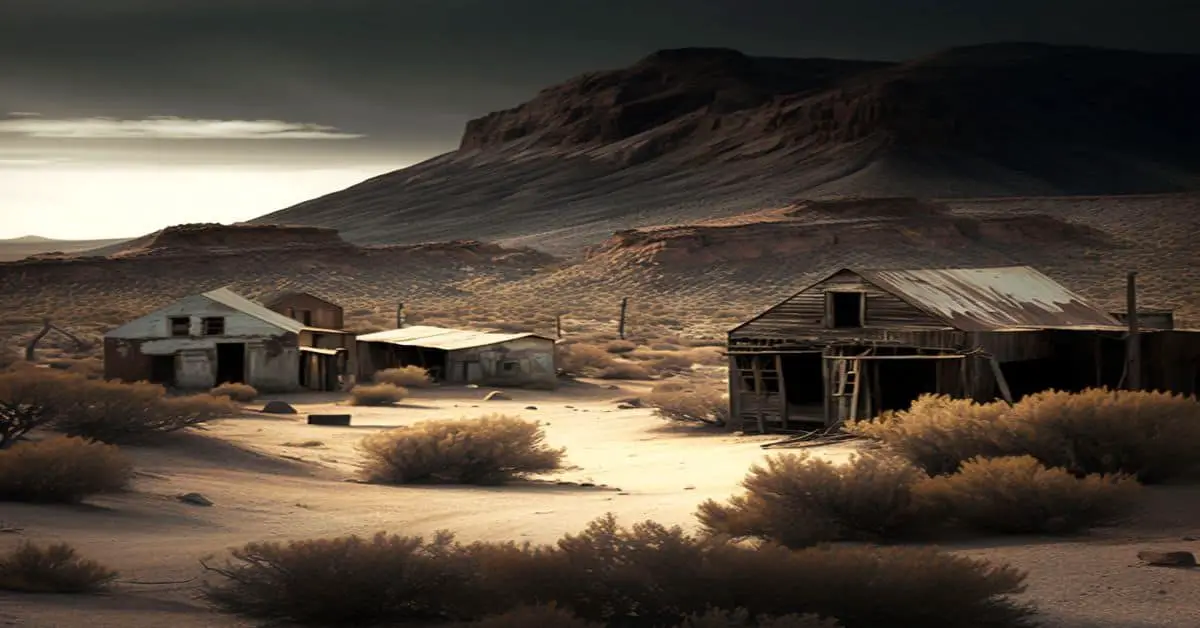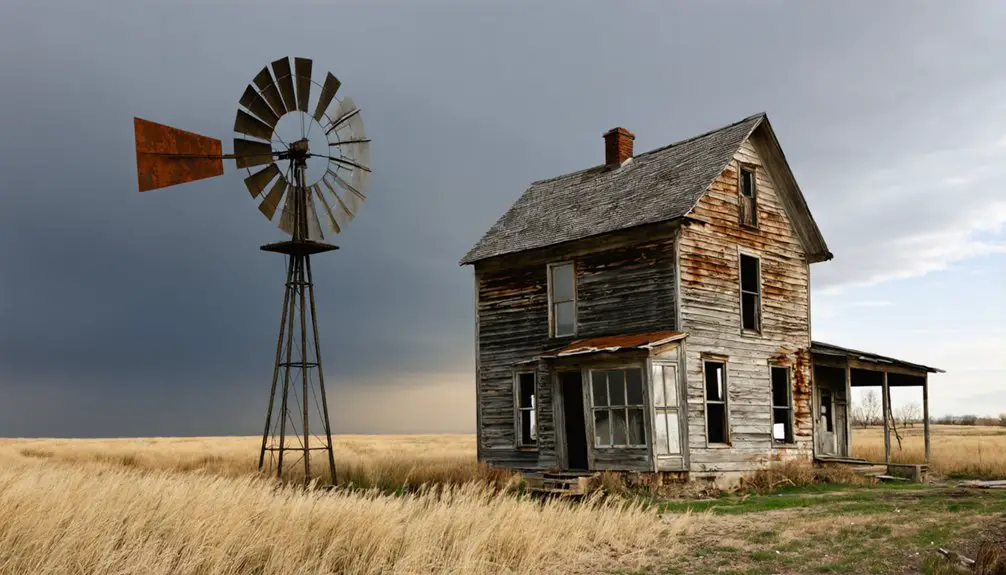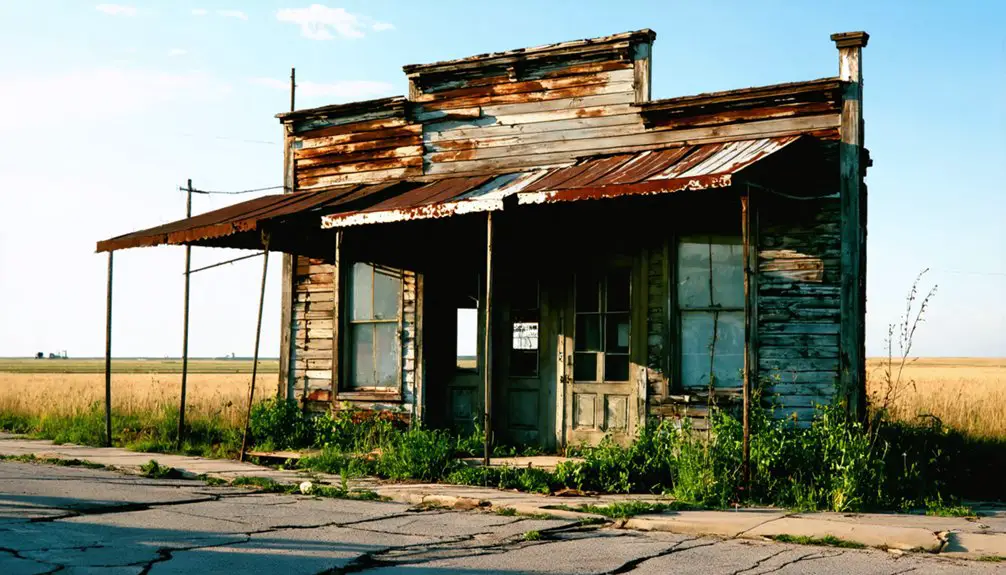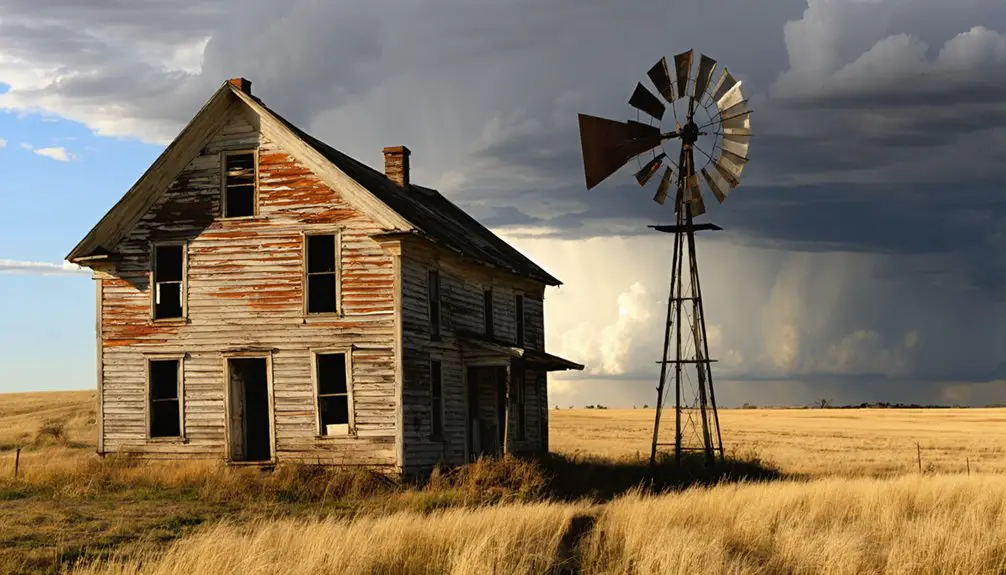Nebraska, also known as “The Planter State,” is a very distinctive state, having the only museum in the world dedicated to just Chevrolet vehicles and being the home of Kool-Aid. However, how many ghost towns are in the state?
There are approximately 64 ghost towns in Nebraska. Substantial buildings of brick and frame structure due to the low cost of constructing material, abundant and the best quality.
Nebraska became a state of the Union on March 1, 1867. It was the 37th state and had been sparsely settled at the time of statehood. Many settlements tried to survive but were ultimately abandoned and lost to the land. The state has many environments, from the Great Plains, prairies, sand dunes, and rock formations.
Roscoes, Nebraska
This ghost town is somewhat famous even though there isn’t much information available. The town’s infrastructure, including the glass, is well-kept and pretty much intact. Roscoes remains heavily guarded, with state troopers constantly in the area.
Roscoe was founded in the early 1870s when the Union Pacific Railroad extended its rail line. The former town was used as a stop-off. Growing the rail line was important for American history since it brought the first transcontinental railroad to North America.
Roscoes is in Keith County in the US state of Nebraska. Its coordinates are 41°07′50″N 101°35′09″W. Nearby local towns are Broganville, Ogallala, and Nevens, and 195 miles from the major city of Aurora, CO. Other towns worth visiting are Keystone, which is immediately north of Roscoe, and Arthur, which is 25 miles north of Lake McConaughy on Highway 61.
Roscoe and nearby towns emerged as railway stations where steam-powered trains could fill their tanks with water from the South Platte River.
Although this town was declared a ghost town in the middle of the 20th century, a lonely gas station near the South Platte River shortly after exiting I-80 was registered to be open as late as 1998, functioning and being a stop for people driving by.
The schoolhouse didn’t close till the 1980s. The twentieth century was its demise, and whatever duties it once served have been assumed by larger communities in the area.
Antioch, Nebraska
Antioch was a potash mining town created during World War I. At its climax, nearly 2000 individuals were present. The need for potash had diminished by 1939, and just 25 residents remained. There are now fewer than 25 inhabitants. Many original structures still stand and are in use. A large concrete processing complex and other facilities along the railroad line, including two mobile homes.
This town is located in Sheridan County, Nebraska, United States. Nearby towns include Hoffland, Lakeside, Trailerville Court, and 200 miles from the major city of Aurora, CO. Its coordinates are 42°04′06″N 102°34′56″W.
After being extracted from the lakes, the potash-rich water was transferred to reduction factories. At its peak, Antioch had five power plants. Antioch’s potash production came to a halt with the end of WWI.
Foreign potash is less expensive, but the supply of foreign-produced potash was shut off during the war. Antioch’s usefulness waned as the conflict progressed.
The Nebraska potash boom ended when French and German potash became more affordable than Nebraska potash. Imports of foreign potash resumed once the war ended. Antioch’s last facility closed in 1921. Ruins of reduction plants and pumping stations still stand as silent witnesses to the activities that once made Antioch a central potash-producing hub.
De Soto, Nebraska
De Soto was named after Hernando De Soto, a Spanish navigator from the sixteenth century.
The Missouri River runs through the De Soto ghost town, located on the eastern edge of Washington County, with Fort Calhoun Township to the south, Blair Township to the west, and the Missouri River to the north. Its coordinates are 41°30′4.15″N 96°3′24.15″W.
In 1857, De Soto had a population of around 650 and served as the county seat from 1858-1866. For a couple of years, a dozen saloons and as many merchants thrived there, but fate had other plans for the town, and by 1881, there were only around twenty people living there.
In July 1858, the most significant impact on this community would have begun; the gold rush had lots of promise and gave entrance to the mining boom of the time. All of this occurred in the southwestern Nebraska territory and was ongoing until the region of colorado was declared.
The pacification of Native Americans, combined with an unstable economy, allowed immigrants to flood Colorado in 1859. The gold rush to Pike’s Peak in 1859-60, the development of Blair, and the loss of the county seat all conspired to demolish the town.
Lemoyne, Nebraska
Lemoyne Jacobs founded Lemoyne in the early 1880s, located in a beautiful area of the North Platte Valley. Residents campaigned for the railroad to come to town. They were successful, and the community prospered. Its coordinates are 41°16′21″N 101°48′48″W.
A stockyard, a general store, a hotel, a barbershop, a school, and a bank were all located in Lemoyne. The population had risen to around 200 by the 1920s.
In 1937, the Tri-County Association began planning to relocate the town and its inhabitants. Buildings were relocated by removing them from their foundations. Some of them went to the new townsite, which was only a short distance away. Some of them went to entirely different towns.
Many inhabitants opposed the proposal and fought to stay in their hometown as long as possible. They, too, were forced to relocate at some point. The dam waters rose, and the town’s ruins were buried beneath the water.
A near-record drought in 2004 reduced Lake McConaughy to around one-fifth of its capacity. When the floodwaters retreated, something unexpected appeared: the remains of Lemoyne town.
Over 60 years ago, the village of Lemoyne was abandoned. The town has returned as Lake McConaughy’s water level has dropped nearly 60 feet; however, it’s still a distinctive ghost town since it has a borderline Atlantis look, once full of people, and ended up underwater.
Just north of the old townsite, “New Lemoyne” was constructed, but the “New” never caught on, and residents continued to refer to the new town as Lemoyne.
Many residents chose to create new homes elsewhere rather than relocate to the new site, resulting in several heartbreaking farewells when the original Lemoyne was dismantled and relocated away.
A similar scenario occurred at the Harlan County Reservoir. When the water level was low a few years ago, visitors could wander through the ruins of Republican City, which had been relocated to higher ground before the dam was constructed. You might never know what’s hiding underwater.
Conclusion
Most of these towns came off as stop points since commercial transportation was in its development era to become how we know it today. Because there is a large amount of land to cover in the state, people in business needed towns to supply their needs without impacting the production price or time. Due to their deficient populations, Nebraska is littered with ghost towns and deserted areas.



